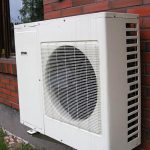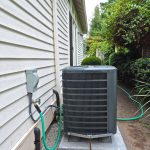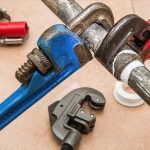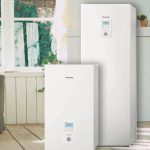Professional HVAC Services for Home and Business Owners in Monroe Michigan
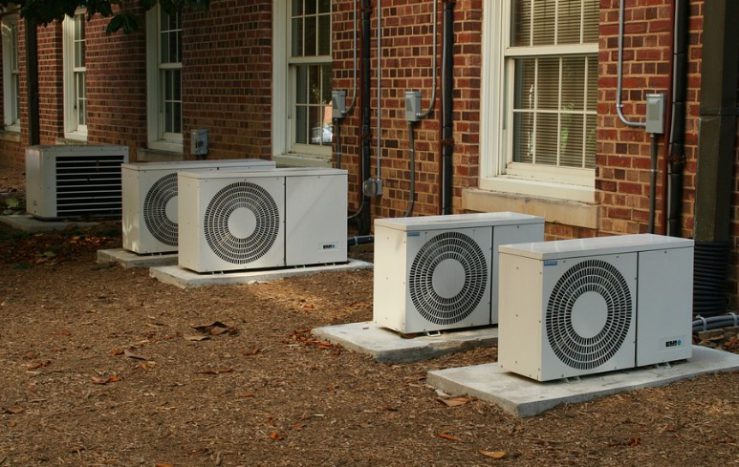
J&K Heating & Cooling is a family-owned business that has been providing HVAC repair, maintenance, inspection, and installation services for more than 30 years. Their services are available for both residential and commercial customers – Heating and cooling Monroe Michigan. They offer competitive prices on all heating and cooling repairs and replacement services. Additionally, they provide consistent, courteous, and prompt service. They also offer easy credit approvals and financial assistance for qualified customers. They work with top brands such as Honeywell, Mitsubishi, Rheem, Trane, and GoodMan.
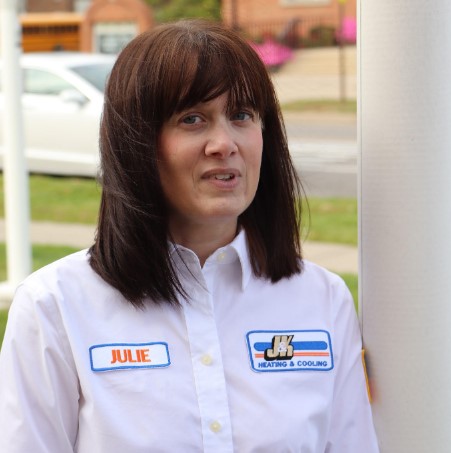
Table of Contents:
What Are Heating And Cooling Systems
Heating and cooling systems are essential to modern life, keeping us comfortable in both hot and cold weather. But what are heating and cooling systems, and how do they work? In this blog post, we will take an in-depth look at heating and cooling systems, from what they are to the different types and the benefits of having a properly functioning system. By the end of this post, you should have a better understanding of heating and cooling systems and how they work.
What Is Heating?
Heating and cooling systems are essential in every home, and it’s important to understand how they work in order to keep your home comfortable all year round. In this section, we will go over the basics of heating and cooling systems, as well as discuss the different types of heating solutions and cooling systems available. We will also provide tips on how to maintain your heating and cooling systems, as well as provide low cost options for those who want to save money on their energy bills.
Before we start, it’s important to understand that heating and cooling systems work by transferring heat from one location (the source) to another (the destination). There are a number of different ways that heat can be transferred, including through gas or electric heating solutions, VRF (virtual reality gas) setups, or air conditioning.
When choosing a heating solution, it’s important to consider the benefits of each type of system. For example, gas is cheaper than electric heat but has less control over temperature levels. Electric heat is more expensive up front but has greater temperature range and can be monitored remotely. VRF setups offer great flexibility but can be more complex to install than other types of heating solutions. Air conditioning is usually the most cost effective option but can be less efficient in cold climates or when there is heavy traffic inside the home.
It’s also important to understand basic maintenance procedures for your heating system: checking seals on valves and pipes; cleaning vents; checking filters; changing oil if necessary; etc.. In addition, regular servicing may include replacing burned-out light bulbs or filters in refrigerators or air conditioners – both common causes of malfunctioning equipment!
So far we’ve talked about how heating works and discussed the different types of solutions available – now let’s look at ways that you can save energy with smart thermostats. Smart thermostats are capable of learning about your habits over time so that they can adjust settings automatically based on weather conditions or timeofday. This means you’ll spend less time adjusting settings manually – making your life easier in the long run!
Last but not least – here are some tips for keeping your home warm during winter: use a space heater instead of an oven when possible; insulate rooms using thermal blankets or foam insulation; install double glazed windows; use a programmable thermostat; etc.. All these tips will help you stay warm without breaking the bank!
Understanding The Basics Of Hot Air Distribution
Heating and cooling systems are essential in any building, and it’s important to understand the terminology and basics of how these systems work. In this blog, we’ll discuss the different types of heating and cooling systems, as well as their applications. We’ll also cover the components of a heating or cooling system, as well as how they work together to distribute hot air. We’ll also discuss some airflow and static pressure considerations when designing or maintaining a heating or cooling system. Finally, we’ll provide tips for balancing an air distribution system so that it is effective and efficient.
When it comes to terminology, you need to be aware of the different terms used for heating and cooling systems. These terms include mechanical ventilation, forced air ventilation, radiant heat transfer, solar energy distribution, natural ventilation (air exchange), among others. Once you understand the terminology used for these systems, it will be easier to identify which type of system would be best for your specific building or application.
One common type of heating and cooling system is mechanical ventilation. This involves circulating air through buildings using fans or pumps to move heated or cooled air around inside the structure. Mechanical ventilation is often used in hospitals and other high-rise buildings because it’s effective at distributing warm or cold air evenly throughout a building quickly.
Radiant heat transfer is another common type of heating and cooling system that uses light instead of heat to produce warmth or coolness inside a structure. Radiant panels use sunlight either directly or through windows to produce warmth on cold days or coolness on warm days inside buildings without using electricity. Radiant panels are often installed in commercial settings such as banks, restaurants, supermarkets, etc., because they are more energy efficient than traditional central AC units.
Natural ventilation (air exchange) is another common type of heating and cooling system that relies on exchanges between fresh outdoor air and indoor spaces. When there’s a lot of moisture inside an enclosed space like a building, natural ventilation can help remove moisture by exchanging moist outdoor air with dry indoor spaces. This process can help reduce the chance of mold growth in closed spaces .
When selecting a heating or cooling system for your specific needs, it’s important to consider several factors including room size, occupancy rate, climate conditions, equipment load requirements etc.. Once you’ve determined which type of system would be best for your situation, you can begin designing your installation accordingly! In this section we’ve provided just enough information so that you can begin understanding how these complex machines work!
What Is Cooling?
Heating and cooling systems are essential for both homes and businesses. They work by transferring thermal energy in the desired direction, which is usually either towards or away from the body. There are a variety of different types of heating and cooling systems that you can choose from, depending on your specific needs.
One common type of HVAC system is a furnace. A furnace uses heat to create steam that is then used to turn a shaft that moves air through the system. This air helps to transfer thermal energy in the desired direction, which can be used to heat up rooms or cool down spaces.
Another common type of HVAC system is central air units. Central air units circulate indoor air throughout a building via ductwork, whereas furnaces are used for small areas like bathrooms or garages. Heat pumps are another type of central air unit that uses electricity to compress refrigerant and then use it to transfer thermal energy in the desired direction.
Boilers are also common HVAC systems, and they use water vapor (H2O) to generate steam that is then used to turn a shaft that moves air through the system. Geothermal systems use geothermal fluid (a hot water mineral mixture) instead of steam or water vapor to generate warmth inside buildings via an underground looped pipesystems ?.
In addition to heating and cooling systems, homeowners can also choose solar panels as their primary source of power for their home heating & cooling needs!
Types Of Heating And Cooling Systems
There are a variety of different types of heating and cooling systems out there, each with its own benefits and drawbacks. Today, we’re going to take a look at the different types of systems and discuss the pros and cons of each one. Afterwards, we’ll dive into some cost considerations and environmental concerns related to these systems.
Central Air:
One of the most common types of heating and cooling systems is central air. This system uses fans to move heated or cooled air throughout a building. Central air is generally more affordable than other types of heating and cooling systems, but it has several drawbacks. For one, central air can be less efficient in colder climates due to the fact that it needs to use more energy to heat or cool the air. Additionally, central air can be quite loud in highly populated areas due to all the noise from the fan motors.
Heat Pumps:
A heat pump is a type of heating and cooling system that uses thermostats (or sensors) to control both indoor temperatures and outdoor ambient temperatures. This system is usually more efficient than central air because it doesn’t need as much energy to run; however, heat pumps are quite expensive compared to other types of heating and cooling systems. Another downside is that heat pumps require regular maintenance – typically once every six months – in order for them to work properly.
Ductless Mini Splits:
Ductless mini splits are another popular type of heating and cooling system; they use mini splits instead of ducts which makes them smaller, easier to install, quieter,and less obtrusive than traditional split AC units.. They also have some advantages over central air: ductless mini splits can be used in any climate without issue, they’re very portable (you can take them with you when you move), they’re relatively cheap when compared with other types of heating or cooling systems,and they require minimal maintenance. However,there are a few downsides too: ductless mini splits tend not perform as well as traditional AC units in cold weathers,they don’t work well if there’s heavy moisture or dust buildup inside your home,and they don’t work well if you have large items placed close to your windows. Overall,ductless mini splits are an excellent choice for people who want an affordable but high-performing system.
Heat Pumps:.
A heat pump is a type of heating and cooling system that uses thermostats (or sensors) to control both indoor temperatures and outdoor ambient temperatures.. This system.
Benefits Of Properly Functioning Heating & Cooling Systems
Heating and cooling systems are essential for a comfortable home or office. They help to keep us warm in the winter and cool in the summer, and they can also be used to regulate indoor air quality. However, not all heating and cooling systems are created equal. In this section, we will outline the different types of heating and cooling systems and their benefits. We will also provide tips on how to select the best system for your needs, as well as tips on how to save money on energy costs with heating and cooling systems.
Different types of heating and cooling systems operate in different ways. For example, air conditioning units use fans to move air around, while central heaters distribute hot or cold water through the walls or ceilings of a room. Each type of system has its own advantages and disadvantages, so it’s important to choose the right one for your needs. Some factors that you should consider when selecting a system include energy efficiency ratings, unit price, installation details, maintenance requirements, health benefits, indoor air quality benefits, and noise levels.
Once you have selected your system(s), it’s important to install them properly so that they function properly throughout the year. Poor installation can lead to problems such as inefficient use of energy or overheating units due to moisture build-up. In addition to proper installation details, it is also important to regularly maintain your heating and cooling systems by cleaning filters or replacing condensers as necessary. Doing so can help you save money on energy costs while improving indoor air quality at the same time!
Finally, keeping your heating & cooling system working well is essential for both personal comfort as well as overall home or office healthiness. Properly functioning units reduce stress levels by providing a warm environment in cold weather conditions as well as regulating indoor humidity levels – both of which have been linked with improved mental health outcomes. Heating & Cooling not only keeps us comfortable but also helps protect our environment by reducing our carbon emissions.
All In All
In conclusion, heating and cooling systems are vital for modern life, and it is important to understand how they work in order to keep your home comfortable all year round. There are a variety of different types of systems available, each with its own benefits and drawbacks. It is also important to understand the basics of hot air distribution, as well as the terminology used for these systems. Additionally, regular maintenance is necessary to ensure that your system is functioning correctly and efficiently. Taking the time to properly research and maintain your heating and cooling system can help save you money in the long run while keeping your home comfortable all year round.

